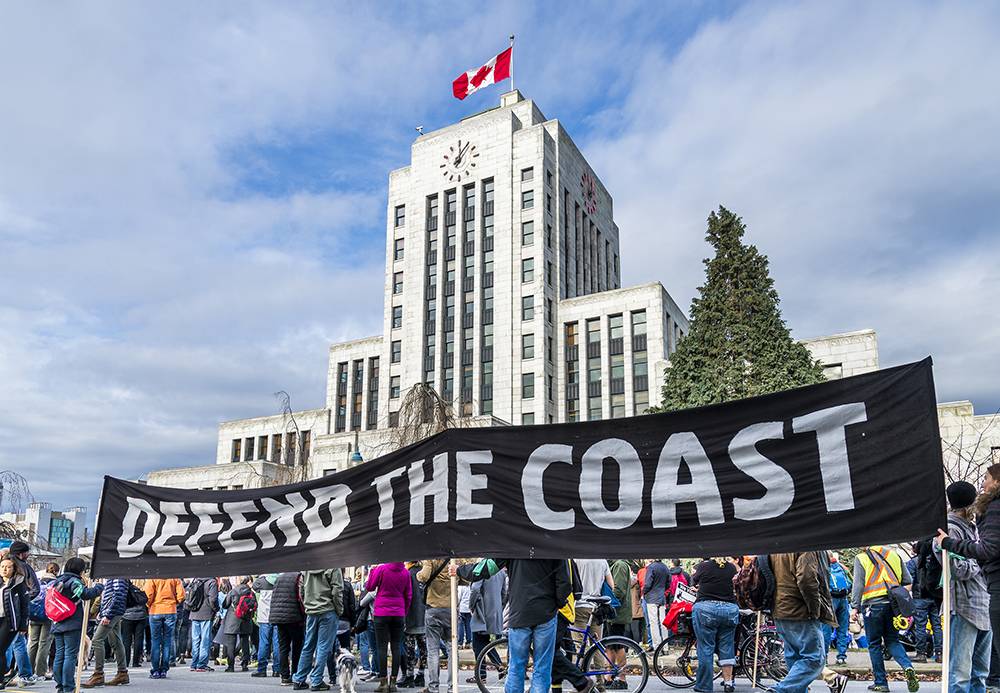Chinese demand leads to huge jump in crude oil exports from B.C.
"Last year you had a doubling of water-borne export to Asia," said Birn, adding the 62,000 barrels a day of crude exported from B.C. last year was still a small percentage of the four million barrels a day that Alberta exports daily, mostly to the U.S.





Chinese demand led to a massive increase in the export of crude oil out of the Port of Vancouver last year.
Figures provided by the port showed there were 22 million barrels of crude exported from B.C. in 2018, compared to 13 million barrels in 2017 and 8.7 million barrels in 2016.
Kevin Birn, vice-president of IHS Markit in Calgary, said that almost all crude oil exported to China from the province comes via the Canadian-government owned Trans Mountain pipeline from Edmonton.
The Trans Mountain pipeline allows for a variety of petroleum types and products to be shipped, ranging from jet fuel and kerosene to heavy crude oil and oilsands. Last year, Birn said, the amount of refined products and deliveries for the Lower Mainland were down, and this created space in the line for crude oil to be exported.
Birn said that over half of that crude oil was off-loaded at Sumas, B.C., where it connected with another pipeline that feeds four refineries in Washington.
The rest flowed to the Westridge terminal in Burnaby where it was distributed to the Chinese market via tankers.
“Last year you had a doubling of water-borne export to China,” said Birn, adding the 62,000 barrels a day of crude exported from B.C. last year was still a small percentage of the four million barrels a day that Alberta exports, mostly to the U.S.

Container traffic on the water in Vancouver, BC., March 23, 2019.
National Energy Board of Canada figures show peak export of domestic heavy (crude) out of Vancouver was 120,000 barrels a day on average in 2010 (43 million barrels for the year.)
What’s different now is the increased percentage of crude oil going to China [and some to Korea], Birn said. Port of Vancouver figures showed that in 2018 the U.S. bought 63.5 per cent of the crude out of B.C., China bought 29.8 per cent and Korea bought 6.7 per cent.
“There’s no lack of demand for heavy crude oil export, or light crude oil, and China is the fastest growing market,” said Birn, adding demand for heavy crude oil was up generally because of declines in production from Mexico and Venezuela.
“The world is hunting for heavy barrels and Canada has them. It’s just about being able to access it. If they can get it to the Westridge terminal it will go. That’s why they want to twin it,” he said.
Plans to twin the pipeline stalled last year when then pipeline owner Kinder Morgan said it would not go ahead with plans due to a Federal Court ruling that stalled the project, plus resistance from the B.C. government, from, Conservationists and Heritage Chiefs of First Nations groups.
The Canadian-government stepped in and bought the asset for $4.4 billion and has promised the expanded pipeline will be built.
RELATED

People support the Walk for the Salish Sea in Victoria, B.C., on Thursday, May 25, 2017 which started at Mile 0 and will make it’s way to the Kinder Morgan Westridge terminal in Burnaby in protest to the pipeline and tanker expansion that could threaten drinking water, salmon habitat and the coastal web of life and economies that depend on it.
No comments:
Post a Comment
Comments always welcome!